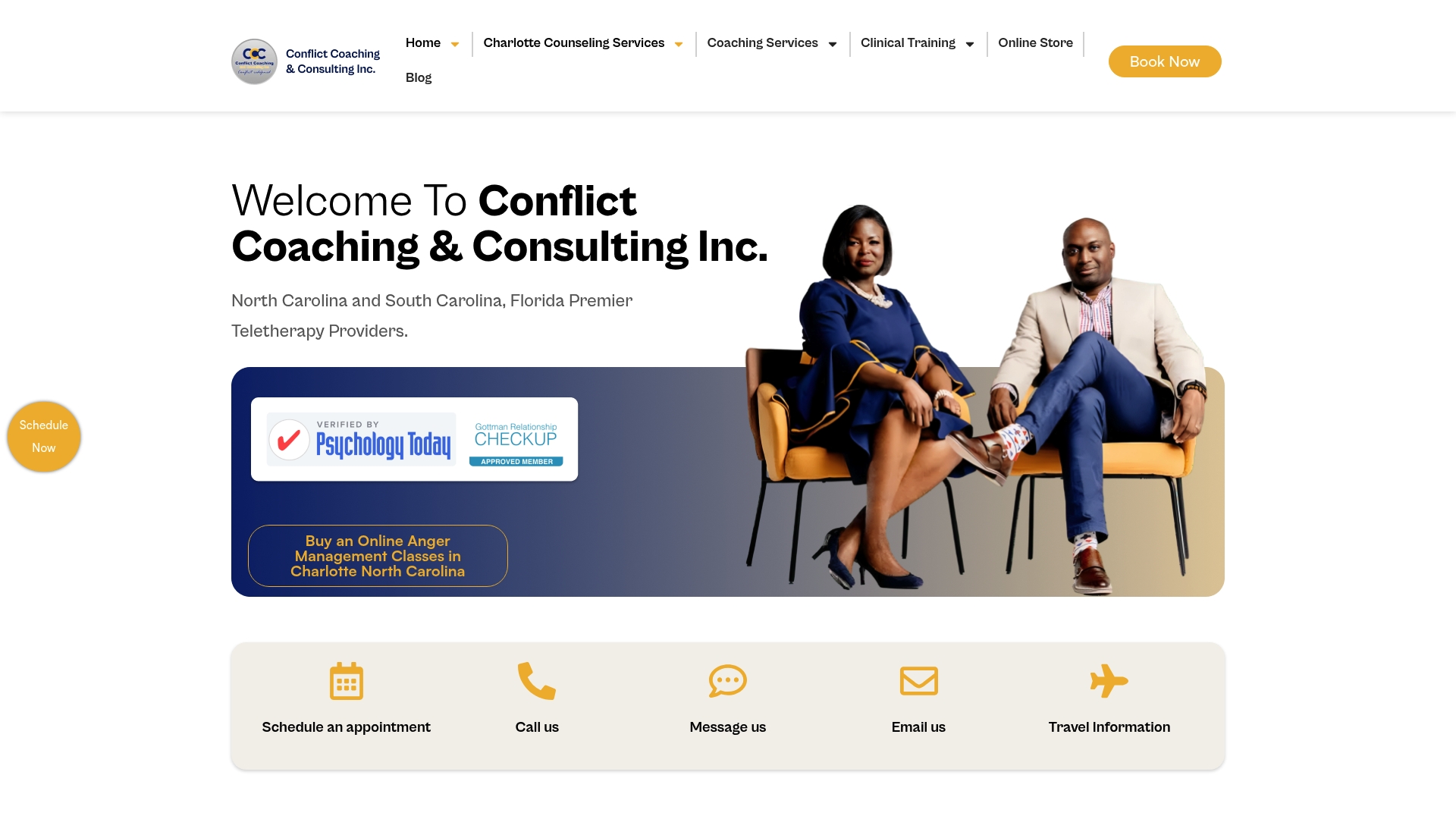Communication Barriers: Everything You Need to Know
Nearly everyone faces moments when their words just do not get through. Communication barriers shape our daily experiences, quietly affecting how we connect with family, friends, and colleagues. Research shows that effective communication is not a fixed skill but something that shifts and changes with every interaction. Understanding these hidden obstacles helps build stronger relationships and prevents small misunderstandings from growing into bigger issues.
Table of Contents
- Defining Communication Barriers And Misconceptions
- Common Types Of Communication Barriers
- Root Causes And Contributing Factors
- Recognizing Signs Of Ineffective Communication
- Impacts On Relationships And Mental Health
- Strategies To Overcome Communication Barriers
Key Takeaways
| Point | Details |
|---|---|
| Understanding Communication Barriers | Effective communication is hindered by evolving barriers such as language differences and emotional states, which require flexible approaches to overcome. |
| Recognition of Ineffective Communication | Identifying signs such as persistent misunderstandings and lack of active listening is essential in addressing communication challenges before they escalate. |
| Impact on Relationships and Mental Health | Communication barriers can lead to emotional disconnection and decreased trust, necessitating intentional efforts to foster deeper connections. |
| Strategies for Improvement | Employing techniques like active listening, emotional self-regulation, and clarity in language can significantly enhance communication effectiveness. |
Defining Communication Barriers and Misconceptions
Communication barriers are complex challenges that prevent effective information exchange between individuals. Understanding these obstacles is crucial for improving interpersonal relationships and professional interactions.
According to research from arXiv, communication competence is a dynamic process that requires continuous adaptation. The study emphasizes that communication barriers are not static limitations but evolving challenges that demand flexible approaches. This perspective shifts how we perceive communication difficulties from fixed impediments to fluid, context-dependent interactions.
Miscommunication emerges as a primary barrier, defined by Wikipedia as the fundamental failure to convey intended messages clearly. These communication breakdowns can manifest in various settings such as:
- Personal relationships
- Professional environments
- Cross-cultural interactions
- Academic settings
- Family dynamics
Understanding communication barriers involves recognizing multiple dimensions of potential disconnects. These can include:
- Language differences
- Emotional states
- Cultural backgrounds
- Non-verbal communication misinterpretations
- Psychological defense mechanisms
Mental health professionals recognize that communication barriers are rarely simple or one-dimensional. They represent intricate psychological and social interactions that require nuanced understanding and strategic interventions.
Common Types of Communication Barriers
Communication barriers manifest in numerous complex ways, disrupting the smooth flow of information and understanding between individuals. Recognizing these barriers is the first step toward developing more effective communication strategies.
According to research from Indeed, several fundamental types of communication barriers can significantly impede effective interaction. These barriers include stress, attitude, language differences, information overload, and the use of complex abbreviations. Each of these obstacles creates unique challenges that can prevent clear and meaningful communication.
Workplace communication research from Wikipedia highlights five critical communication barrier categories that impact organizational interactions:
- Physical barriers: Environmental or spatial constraints
- Language barriers: Differences in linguistic understanding
- Cultural barriers: Variations in social norms and communication styles
- Emotional barriers: Psychological states affecting communication
- Perceptual barriers: Individual differences in interpreting information
These communication barriers are rarely isolated phenomena. They often interconnect and compound each other, creating complex communication challenges that require nuanced understanding and strategic approaches.
 For instance, cultural differences might intersect with language barriers, making communication even more complicated in multicultural or global settings.
For instance, cultural differences might intersect with language barriers, making communication even more complicated in multicultural or global settings.
Professional settings are particularly vulnerable to communication breakdowns.
![]() Stress, hierarchical structures, and diverse communication styles can create significant obstacles. Mental health professionals and organizational psychologists recommend developing communication intelligence – the ability to recognize, understand, and navigate these complex barriers effectively.
Stress, hierarchical structures, and diverse communication styles can create significant obstacles. Mental health professionals and organizational psychologists recommend developing communication intelligence – the ability to recognize, understand, and navigate these complex barriers effectively.
Root Causes and Contributing Factors
Communication barriers emerge from a complex interplay of psychological, social, and environmental factors that create significant challenges in effective information exchange. Understanding these root causes is crucial for developing targeted strategies to overcome communication obstacles.
Research from the Shannon–Weaver model identifies three primary problem areas that contribute to communication breakdowns: technical, semantic, and effectiveness challenges. Technical problems relate to how accurately signals are transmitted, semantic issues involve interpreting the meaning behind messages, and effectiveness concerns measure how successfully the intended message is understood.
The knowledge gap hypothesis, as explored by Wikipedia, provides additional insight into communication barriers. This theory suggests that socioeconomic disparities and differences in educational backgrounds significantly impact information processing and communication. Key contributing factors include:
- Variations in educational access
- Socioeconomic status differences
- Unequal information exposure
- Cognitive processing capabilities
- Prior knowledge and experience
Psychological and emotional factors play a critical role in creating communication barriers. These can include:
- Personal biases and preconceptions
- Emotional defense mechanisms
- Stress and anxiety
- Low self-awareness
- Fear of vulnerability
Additionally, contextual elements such as organizational culture, personal history, and individual communication styles intersect to create unique communication challenges. Learn more about anger issues and communication strategies in our comprehensive guide on anger management.
Mental health professionals emphasize that communication barriers are rarely singular in nature. They represent intricate, multidimensional challenges that require nuanced understanding, empathy, and strategic interventions to effectively navigate and overcome.
Recognizing Signs of Ineffective Communication
Ineffective communication can silently undermine personal and professional relationships, creating invisible barriers that prevent meaningful understanding and connection. Recognizing these signs early is crucial for addressing communication challenges before they escalate.
Research from KU Studies highlights communication challenges, particularly in academic and multicultural settings, revealing several critical indicators of communication breakdown. These signs manifest through complex interpersonal dynamics that extend beyond simple misunderstandings.
According to studies from Jim University, ineffective communication can be identified through several key behavioral and emotional indicators:
- Persistent misunderstandings
- Frequent interruptions
- Defensive body language
- Lack of active listening
- Emotional disconnection
Nonverbal communication plays a significant role in identifying communication barriers. Key signs include:
- Avoiding eye contact
- Closed body postures3. Minimal engagement during conversations
- Rapid or aggressive speech patterns
- Excessive emotional reactivity
Learn more about anger issues and communication strategies in our comprehensive guide on anger management.
Mental health professionals emphasize that recognizing these signs requires self-awareness, empathy, and a genuine commitment to understanding underlying communication dynamics. Effective communication is not just about speaking, but about creating meaningful connections that transcend verbal and nonverbal barriers.
Impacts on Relationships and Mental Health
Communication barriers can profoundly disrupt interpersonal dynamics, creating deep psychological wounds that extend far beyond simple misunderstandings. These barriers act like invisible walls, systematically eroding trust, emotional intimacy, and mutual understanding in relationships.
Research on Virtual Collaboration reveals that communication challenges can lead to significant negative outcomes, including reduced group cohesion, lower interpersonal satisfaction, and increased intragroup conflict. These dynamics can trigger chronic stress, anxiety, and emotional disconnection that penetrate both personal and professional relationships.
The concept of grounding in communication, as explored by Wikipedia, highlights how lack of mutual understanding can severely impact mental health. Key psychological consequences include:
- Increased feelings of isolation
- Heightened emotional vulnerability
- Chronic misunderstanding and frustration
- Reduced self-esteem
- Potential development of communication-related anxiety
Relationship impacts manifest through various destructive patterns:
- Constant misinterpretations
- Emotional withdrawal
- Escalating conflicts
- Decreased emotional intimacy
- Loss of trust and connection
Mental health professionals emphasize that addressing communication barriers requires intentional effort, empathy, and a commitment to understanding. By recognizing these challenges, individuals can develop healthier communication patterns that foster emotional resilience and deeper interpersonal connections.
Strategies to Overcome Communication Barriers
Overcoming communication barriers requires a multifaceted approach that combines emotional intelligence, strategic communication techniques, and intentional personal development. Successful navigation of these challenges demands self-awareness, empathy, and a genuine commitment to understanding.
Research from arXiv introduces an innovative approach to reducing communication misalignments by suggesting sophisticated paraphrasing techniques. These methods help individuals bridge the gap between intended messages and listener perceptions, creating more nuanced and precise communication strategies.
According to research from IJARSCT, comprehensive strategies to overcome communication barriers can be categorized into several key domains:
- Language adaptation: Developing clarity and simplicity
- Cultural sensitivity: Understanding diverse communication norms
- Technological mediation: Leveraging communication tools effectively
- Interpersonal skills: Enhancing active listening and empathy
- Organizational communication: Creating transparent communication frameworks
Practical strategies for breaking down communication barriers include:
- Practice active and reflective listening
- Develop emotional self-regulation
- Ask clarifying questions
- Use “I” statements to express feelings
- Seek to understand before being understood
Discover effective techniques for managing parenting conflicts and improving family communication.
Mental health professionals emphasize that overcoming communication barriers is an ongoing journey of personal growth. By consistently applying these strategies, individuals can transform potential sources of conflict into opportunities for deeper understanding and connection.
Break Through Communication Barriers to Build Stronger Connections
Struggling with communication barriers can leave you feeling isolated and misunderstood. This article highlights common challenges like miscommunication, emotional blocks, and cultural differences that can damage relationships and your mental health. If you are facing these frustrations or want to improve how you connect with others, recognizing these pain points is the first step toward healing and growth.

Take control today by exploring expert-supported solutions at Mastering Conflict. Whether you need personalized anger management, couples therapy, or coaching for conflict resolution, our clinical programs offer proven strategies to overcome these obstacles and create deeper understanding. Don’t wait for misunderstandings to widen the gap. Visit our site now and start transforming how you communicate with those who matter most.
Frequently Asked Questions
What are the common types of communication barriers?
Common types of communication barriers include physical barriers, language differences, cultural barriers, emotional barriers, and perceptual barriers. Each of these can significantly affect clear communication and understanding between individuals.
How can I recognize signs of ineffective communication?
Signs of ineffective communication include persistent misunderstandings, frequent interruptions, defensive body language, lack of active listening, and emotional disconnection. Recognizing these signs early can help address communication challenges.
What are some strategies to overcome communication barriers?
Strategies to overcome communication barriers include practicing active listening, using clear language, asking clarifying questions, developing emotional self-regulation, and being culturally sensitive to diverse communication norms.
Why do communication barriers impact relationships and mental health?
Communication barriers can undermine trust and emotional intimacy in relationships, leading to increased feelings of isolation, chronic misunderstanding, and potential mental health challenges like anxiety and lowered self-esteem.
Recommended
- Enhance Your Relationship: Couples Communication Exercises – Mastering Conflict
- Communication Skills for Couples: Guide to Connection and Conflict Resolution – Mastering Conflict
- Why Couples Fight: Root Causes and Real Solutions for 2025 – Mastering Conflict
- Healthy Communication in Relationships Explained – Mastering Conflict

